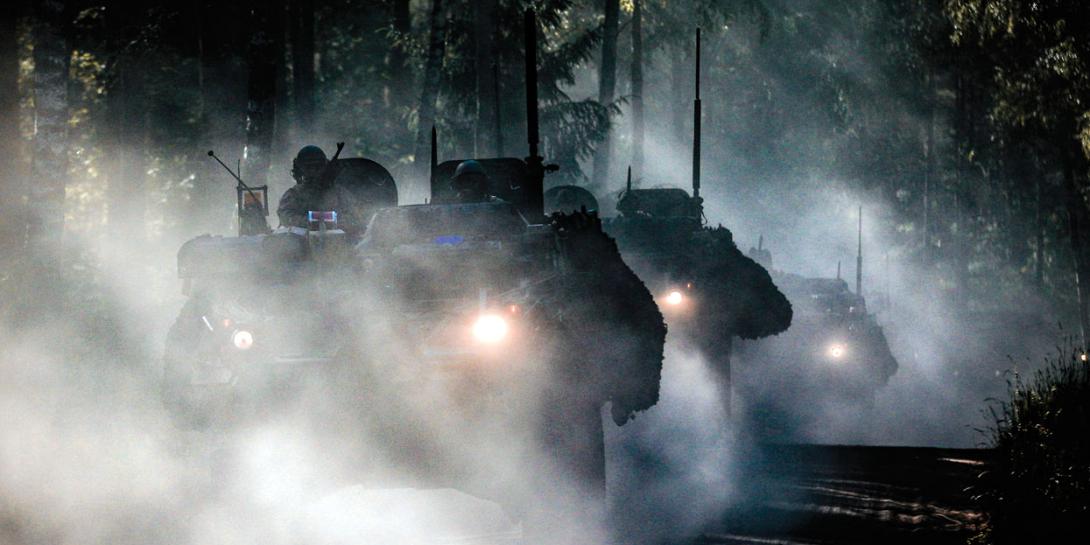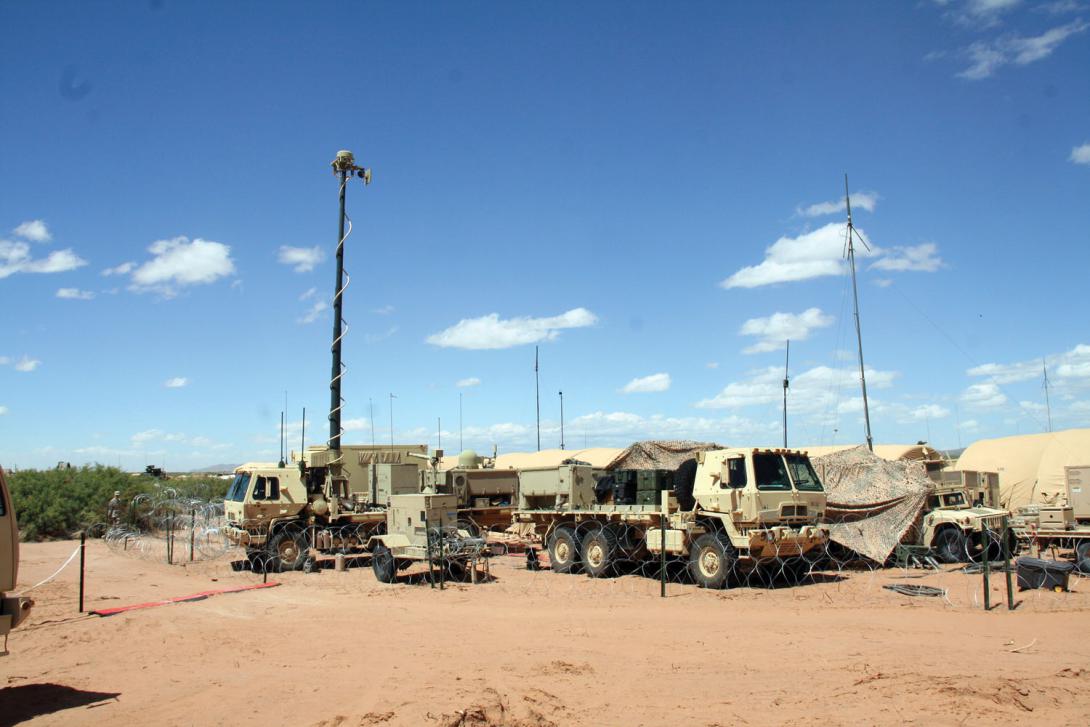This Is No One-Size-Fits-All Army Modernization
The U.S. Army’s major overhaul of its network may lead to a communications structure capable of conforming to an array of operational situations, including the possibility of providing offensive cyber and electronic warfare capabilities.
Because future adversaries are likely to possess advanced technologies similar to those used by U.S. forces, Army officials have created six cross-functional teams to lead an extensive effort to modernize the force in six key areas: long-range precision fires; next-generation combat vehicles; future vertical lift platforms; air and missile defense capabilities; soldier lethality; and the network. Today’s Army network is considered too complex, with too many systems, and too fragile to effectively counter electronic warfare attacks by a technologically sophisticated adversary.
Army officials in recent months have described the modernized network as simple, intuitive, mobile, expeditionary, resilient, available, reliable, standards-based, upgradable, accessible to allies, difficult for adversaries to detect, capable of communications on the move and usable as a weapon system. That may seem to some like an idealized, too-good-to-be-true vision, but those capabilities may vary to a certain degree based on the operational needs of the moment. “It may not all be possible everywhere. We’re looking for scalable, tailorable solutions,” says Gen. Peter Gallagher, USA, who leads the cross-functional team for the Army network. “In a very mobile, very lethal fight, it’s a different kind of network that you need. We can find ourselves in a range of scenarios, and a one-size-fits-all solution is not what we need.”
A unit on the move, for example, will not need the network bandwidth to deliver full-motion video. Gen. Gallagher indicates that the Army needs the discipline to determine “the no-kidding information exchange requirements in order to fight and win.”
Maj. Gen. David Bassett, USA, program executive officer for command, control and communications-tactical, voices agreement. “We don’t want to train in a way that we don’t fight. We have to have the ability to … provide a range of options,” Gen. Bassett offers. “ Having a range of options and providing those options in a way that doesn’t add complexity is a challenge.”
A tailorable or scalable network could allow more bandwidth and more robust capabilities when a unit is “at the halt” rather than maneuvering on the battlefield. “Radio-listening silence used to be a thing, and there may be operational situations where we want to do that,” Gen. Bassett says. “At other times when we’re at the halt, we can bring in large [communications] dishes and other things that can greatly expand the availability of comms.”
Regarding the need for a network that is usable as a weapon system, Gen. Gallagher says the modernized network could offer offensive cyber and electronic warfare capabilities. Some modern systems, such as radio-frequency transmitter-receivers, can serve multiple purposes, he explains. “There are systems today … we can leverage to communicate [that] can also be used by electronic warfare experts on our team to ensure we maintain mission assurance and dominance of that domain, whether it’s spectrum or cyber,” Gen. Gallagher says. “We have the ability not only to assure the mission and the integrity of our defensive posture but to enable the offensive posture both for electronic warfare and cyber operations.”
Both generals emphasize that the network also must be affordable. “Scalability and affordability are probably more of an inhibitor than the technology in many cases,” Gen. Gallagher notes.
Cloud computing, automation, artificial intelligence and machine learning are some of the technologies that will enable the modernized network. Gen. Bassett distinguishes between the terms cloud computing and edge computing, which he points out many people use interchangeably. In edge computing, data is processed “near the edge of your network, where the data is being generated, instead of in a centralized data-processing warehouse,” according to Hewlett Packard Enterprise. On the other hand, cloud computing—in broad terms—delivers technology as a service on demand over the Internet. Both edge and cloud computing are necessary for the Army. “It’s going to take a combination of cloud and edge computing and a lot of smart engineering to bring this all together,” Gen. Gallagher explains.
Ideally, warfighters would be able to process vast amounts of data wherever it was collected. “Frequently, the data is collected at the edge, and because of the structure of our communications network, we have limits on how we move that data outside the edge,” Gen. Bassett elaborates.
The program executive officer indicates that the sensors on just one combat vehicle can generate significantly more data than the network can communicate. “If you start with that assumption, you’re going to design your processing in a way that acknowledges that overall fact: You can generate way more data than you can move around,” he suggests. “We can put plenty of processing on a platform, but where it gets constrained is where you’ve got to take the disconnected systems and connect them back, whether that’s over a satellite or something else. As soon as you’re constrained by spectrum, that becomes a bottleneck.”
The bandwidth bottleneck, Gen. Gallagher recalls, was one of the first modernization topics of discussion with industry. “The first exchange meeting we did with industry was about attacking that problem of the bandwidth limitations of a contested environment and what that means with our current network and how to modernize that so that we have continuously adaptable solutions going forward,” he says.
Automation, artificial intelligence and machine learning also will help warfighters cope with copious amounts of information. Gen. Gallagher reports that the Army is closely monitoring the results of the U.S. Defense Department’s Project Maven, more formally known as the Algorithmic Warfare Cross-Function Team. It is led by the Intelligence, Surveillance and Reconnaissance (ISR) Operations Directorate-Warfighter Support in the Office of the Undersecretary of Defense for Intelligence. The project uses biologically inspired neural networks to autonomously extract objects of interest from moving or still imagery.
The effort sparked controversy among employees at Google, one of the project’s contractors. The employees did not want their algorithms used for military targeting, and Google ultimately announced its withdrawal from the project. But the military seems undeterred.“It’s about decision making based on all these disparate ISR systems that are out there and being able to understand target deconfliction,” Gen. Gallagher says. “As we learn through things like Project Maven and see how it expands to the other warfighting functions, we’ll gain a lot by working that. It’s about helping senior leaders and staff to make decisions better.”
Automation and artificial intelligence also will contribute to the Army’s vision of a self-healing network, in which a self-monitoring network detects when a node is down and automatically brings it back online. Such a network reduces some of the burden on personnel. “You can leverage things like machine learning and deep learning, where the hardware and software are doing a lot of the work,” Gen. Gallagher says.
Gen. Bassett adds that technology can help commanders and warfighters home in on the most vital information for faster decision making. For example, the system can be preprogrammed to focus on data indicating a potential chemical attack. “One of the capabilities that is built into our new Command Post Computing Environment is this idea of smart layers in the mission command system. The operators can tell the system going in what is important and then have the system alert them to those conditions when those conditions occur,” he says. “That’s not even artificial intelligence. That’s just some simple automation tools.”
Technology is not the only solution, the generals suggest. Adjusting tactics, techniques and procedures when and where necessary also is important. As far as technology goes, the generals indicate that they have laid a solid foundation but still have a lot of work to do. “We know the network we have today is not the network we need, but we’ve got a pretty good foundation to get to this continuously adaptable solution,” Gen. Gallagher says.






Comments